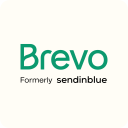Constant Contact vs Moosend: Which email marketing tool is best for your business?
- 01Constant Contact vs Moosend: overview
- 02What's the difference between Constant Contact and Moosend?
- 03Constant Contact pros and cons
- 04Moosend pros and cons
- 05Constant Contact compared to Moosend
- 06Moosend compared to Constant Contact
- 07Features comparison
- 08Constant Contact vs Moosend: Which is the best for your business?
- 09Promotions on Email Marketing software
- 10Alternatives to Constant Contact & Moosend
Access up to $246 savings on Constant Contact & $215 on Moosend
Access up to $246 savings on Constant Contact & $215 on Moosend
When running an email marketing campaign, choosing the right platform is crucial for maximizing your reach and engagement. With a multitude of email marketing solutions available, finding the best fit for your business can be challenging. These tools offer features that help you design, automate, and analyze your email campaigns, ensuring that your marketing efforts are as effective as possible.
But how do you choose the right platform? Our in-depth comparison of two of the most popular options, Constant Contact and Moosend, is an excellent place to start. We will guide you through their key features, pricing, and differences, helping you determine which platform aligns best with your business needs.
Constant Contact vs Moosend: overview
Constant Contact and Moosend are two prominent players in the realm of email marketing, each offering unique strengths tailored to meet specific business needs.
Constant Contact is well-known for its robust set of features, particularly in campaign creation and management. It offers an intuitive drag-and-drop editor, extensive email templates, social media marketing tools, and powerful analytics. On the other hand, Moosend stands out for its advanced automation capabilities and flexible pricing. It provides sophisticated automation workflows, list segmentation, and real-time analytics, catering to businesses that prioritize detailed customization and cost-effective solutions.
Now, let's delve into the Constant Contact vs. Moosend comparison to help you make an informed decision when selecting the right email marketing platform for your business.
What's the difference between Constant Contact and Moosend?
Both Constant Contact and Moosend are powerful email marketing platforms with dedicated user bases. However, there are several key differences that may help you decide which one is better suited for your business needs. One of the primary distinctions between the two is their pricing models. Constant Contact offers a tiered pricing structure based on the number of contacts you have, making it potentially more expensive as your email list grows. However, this pricing includes access to a wide range of features such as email templates, event management, and social media tools. For businesses with large contact lists, the cost of Constant Contact can quickly escalate.
In contrast, Moosend offers a more straightforward and cost-effective pricing model, particularly appealing to smaller businesses or startups. Moosend charges based on the number of subscribers but generally provides more affordable plans compared to Constant Contact. Additionally, Moosend offers a free plan with up to 1,000 subscribers, making it an attractive option for businesses that are just starting out and want to explore email marketing without committing to a significant upfront cost.
When it comes to features, both platforms excel in different areas. Constant Contact is known for its comprehensive set of marketing tools, including event management, survey creation, and a wide array of integrations, making it a strong choice for businesses that require an all-in-one marketing platform. On the other hand, Moosend is particularly strong in automation and segmentation, offering advanced workflows and detailed analytics that cater to businesses focused on targeted and personalized email marketing campaigns.
Finally, while both platforms offer customer support, Constant Contact provides more robust customer service options, including phone support and personalized marketing advice, which might be a deciding factor for businesses that value hands-on assistance. Moosend, while offering solid support, is more reliant on self-service resources and email-based support.
Constant Contact pros and cons
What are the advantages of Constant Contact?
- User-friendly interface: Constant Contact offers an intuitive drag-and-drop editor, making it easy for users, even those with limited technical skills, to create professional-looking emails quickly.
- Comprehensive marketing tools: Beyond email marketing, Constant Contact provides a suite of additional tools, including event management, social media integration, and survey creation, making it a versatile marketing platform.
- Robust customer support: Constant Contact is known for its excellent customer service, offering phone support, live chat, and extensive online resources, which is particularly helpful for small businesses.
- Large template library: The platform offers a wide variety of customizable email templates, helping users to quickly create visually appealing emails that align with their brand.
- Event management features: Constant Contact includes unique event management features, allowing businesses to promote, manage, and track event registrations directly from the platform.
What are the disadvantages of Constant Contact?
- Higher cost for larger lists: The pricing structure of Constant Contact is based on the number of contacts, which can become expensive as your email list grows, especially for businesses with large subscriber bases.
- Limited automation features: Compared to some competitors, Constant Contact’s automation capabilities are more basic, lacking the advanced workflow customization and triggers offered by other platforms.
- Basic reporting and analytics: While Constant Contact provides essential metrics, its reporting features are not as detailed or advanced as those of other email marketing tools, which may be limiting for data-driven marketers.
- Limited A/B testing: Constant Contact’s A/B testing features are somewhat restricted, allowing for testing of only subject lines, whereas other platforms may offer more comprehensive testing options.
- No free plan: Unlike some competitors, Constant Contact does not offer a free plan, which might be a barrier for small businesses or startups looking to minimize costs while exploring email marketing.
Compare Constant Contact to other tools
Moosend pros and cons
What are the advantages of Moosend?
- Affordable pricing: Moosend offers competitive pricing, with plans that are generally more affordable than many other email marketing platforms. Additionally, it provides a generous free plan for up to 1,000 subscribers, making it an attractive option for small businesses and startups.
- Advanced automation features: Moosend excels in automation, offering powerful workflow customization, triggers, and detailed segmentation options. This allows businesses to create highly personalized and targeted email campaigns.
- User-friendly interface: The platform has a clean and intuitive interface, making it easy for users of all skill levels to create, manage, and automate email campaigns efficiently.
- Comprehensive analytics: Moosend provides in-depth analytics and reporting tools, enabling users to track campaign performance, monitor subscriber behavior, and make data-driven decisions to improve marketing strategies.
- Flexible template options: Moosend offers a variety of customizable templates that can be easily tailored to suit different brands and campaign styles, helping users create visually appealing emails quickly.
What are the disadvantages of Moosend?
- No phone support: Moosend primarily offers support through email and chat, lacking phone support, which might be a drawback for users who prefer direct, immediate assistance.
- Basic landing page builder: Moosend’s landing page builder is relatively basic compared to more specialized tools, which may not be sufficient for businesses looking for advanced landing page customization and optimization features.
- Limited event management features: Unlike some competitors, Moosend does not offer built-in event management tools, which could be a disadvantage for businesses that frequently host events or webinars.
- Learning curve for advanced features: While Moosend is user-friendly, some of its more advanced features, like automation and segmentation, may require a bit of a learning curve for users who are new to email marketing or unfamiliar with advanced tools.
- Limited template variety: Moosend's template library, while functional, offers fewer design options compared to some competitors. This can be limiting for businesses looking for a wide range of creative, pre-designed templates.
Compare Moosend to other tools
Constant Contact compared to Moosend
Constant Contact and Moosend are both robust email marketing platforms, but they cater to different business needs. Constant Contact is known for its comprehensive suite of marketing tools, including event management and social media integration, making it ideal for businesses seeking an all-in-one solution. However, it can be more expensive, especially for larger contact lists.
Moosend, on the other hand, offers more advanced automation features and a cost-effective pricing model, making it a great choice for businesses focused on targeted campaigns and budget-conscious strategies. While Constant Contact excels in support and ease of use, Moosend stands out with its flexibility and affordability.
Is Constant Contact better than Moosend?
Whether Constant Contact is better than Moosend depends on your specific business needs. Constant Contact is a better choice for businesses that require an all-in-one marketing solution with features like event management, social media integration, and robust customer support. It’s particularly well-suited for users who prioritize ease of use and need comprehensive tools beyond just email marketing.
On the other hand, Moosend is better for businesses that prioritize advanced automation, detailed audience segmentation, and affordability. If your focus is on creating highly targeted email campaigns and you're operating on a budget, Moosend may be the superior option.
What is Constant Contact best used for?
Constant Contact is best used for small to medium-sized businesses that need a comprehensive and user-friendly platform to manage their email marketing efforts. It excels in creating professional-looking email campaigns with its drag-and-drop editor and extensive template library. Additionally, it’s highly effective for businesses that need integrated event management, social media marketing, and surveys.
Constant Contact is particularly valuable for organizations that prioritize customer support, as it offers extensive resources and personalized assistance. Overall, it’s ideal for businesses looking for an all-in-one marketing solution that combines ease of use with robust functionality.
Can Constant Contact replace Moosend?
Constant Contact can replace Moosend for businesses seeking a more comprehensive marketing solution with a broader range of features, including event management, social media tools, and a wide selection of templates. However, whether it should depends on specific needs. Constant Contact offers excellent customer support and is easier to use for those new to email marketing.
On the other hand, Moosend’s strength lies in its advanced automation capabilities and cost-effective pricing, making it a better fit for businesses that prioritize detailed segmentation and budget considerations.
Is Constant Contact cheaper than Moosend?
Constant Contact is generally not cheaper than Moosend, especially as your contact list grows. Constant Contact's pricing is based on the number of subscribers and tends to be more expensive, particularly for larger lists, due to its comprehensive suite of marketing tools. In contrast, Moosend offers a more affordable pricing structure, including a free plan for up to 1,000 subscribers, making it a budget-friendly option for smaller businesses or those just starting with email marketing.
While Constant Contact provides additional features and robust customer support, Moosend is typically the more cost-effective choice, particularly for businesses focused on automation and segmentation.
Is there a better Email Marketing software than Constant Contact?
Constant Contact is a popular choice for email marketing, but it's important to evaluate whether there might be a better fit for your specific marketing needs.
Some notable alternatives to Constant Contact include Moosend, Mailchimp, Brevo, and GetResponse.
The choice of email marketing software depends on your organization's unique requirements, budget, and the features you prioritize. While Constant Contact excels in providing an all-in-one marketing solution with robust customer support and ease of use, other tools may offer more advanced automation, cost-effective pricing, or specialized features that better align with your business goals.
50% off for up to 1 year on the Core and Plus plans. on Constant Contact
Get 50% off for up to 1 year on the Core and Plus plans. on Constant Contact and up to $246 savings with Secret.
Moosend compared to Constant Contact
Moosend and Constant Contact are both strong contenders in the email marketing space, but they cater to different needs. Moosend is known for its advanced automation features and affordable pricing, making it an excellent choice for businesses focused on personalized and segmented email campaigns. It offers a cost-effective solution, especially for smaller businesses or startups.
In contrast, Constant Contact provides a broader range of marketing tools, including social media integration and event management, and is known for its user-friendly interface and strong customer support. While Moosend offers greater flexibility in automation, Constant Contact is ideal for businesses seeking a more comprehensive marketing platform.
Is Moosend better than Constant Contact?
Whether Moosend is better than Constant Contact depends on your business priorities. Moosend excels in providing advanced automation and detailed audience segmentation at a lower cost, making it ideal for businesses focused on targeted email campaigns and those operating with a tighter budget. It’s particularly advantageous for smaller businesses or startups that need powerful automation without the higher costs associated with larger platforms.
However, if your business requires a more comprehensive marketing platform with additional tools like event management and social media integration, Constant Contact may be the better choice due to its broader feature set and ease of use.
What is Moosend best used for?
Moosend is best used for businesses that prioritize advanced email marketing automation and detailed audience segmentation. It excels in creating personalized email campaigns with its powerful workflow automation tools, allowing users to set up intricate sequences based on user behavior, demographics, and other triggers.
Moosend is particularly effective for businesses looking to optimize their marketing efforts with precise targeting and analytics without breaking the budget. Its affordability, coupled with a strong set of features, makes it ideal for small to medium-sized businesses and startups that need a robust, yet cost-effective, solution for their email marketing needs.
Can Moosend replace Constant Contact?
Moosend can replace Constant Contact for businesses that prioritize advanced automation and cost-effectiveness in their email marketing strategy. Moosend offers powerful tools for creating personalized campaigns and detailed segmentation, making it a strong alternative, especially for those looking to optimize their marketing efforts on a budget. However, whether it should depends on your specific needs.
Constant Contact provides a broader range of marketing features, including event management and social media tools, along with robust customer support. If your business requires these additional features or values a more comprehensive marketing solution, Constant Contact might still be the better choice.
Is Moosend cheaper than Constant Contact?
Moosend’s pricing plans are generally cheaper than Constant Contact, particularly for businesses with smaller subscriber lists or those looking for an affordable email marketing solution. Moosend offers a straightforward pricing model with lower costs, especially as your subscriber base grows, and it includes a free plan for up to 1,000 subscribers. This makes it an attractive option for startups and small businesses.
In contrast, Constant Contact tends to be more expensive due to its broader range of marketing tools and additional features. For businesses focused primarily on email marketing with a tighter budget, Moosend is typically the more cost-effective choice.
Is there a better Email Marketing software than Moosend?
Moosend is a powerful email marketing platform, but it's important to consider whether there might be a better option for your specific marketing needs.
Some notable alternatives to Moosend in the email marketing space include Constact Contact, Omnisend, MailerLite, and ActiveCampaign.
The choice of email marketing software depends on your organization's unique requirements, budget, and marketing objectives. While Moosend excels in automation, affordability, and ease of use, other tools may offer more advanced features, such as enhanced CRM capabilities, multichannel marketing options, or more robust analytics.
75% off monthly plans for 1 year on Moosend
Get 75% off monthly plans for 1 year on Moosend and up to $215 savings with Secret.
Features comparison
Moosend Elevates Customization Beyond Constant Contact
While both tools offer robust customization features, Moosend takes this to another level by allowing businesses to tailor their email messages with a higher degree of precision based on the unique preferences and behaviors of their recipients. Moosend’s advanced segmentation capabilities enable marketers to create highly targeted campaigns, segmenting audiences based on detailed criteria such as purchase history, browsing behavior, and engagement metrics. For example, a business can use Moosend to automatically send personalized product recommendations to customers who have shown interest in specific categories. This level of customization ensures that each interaction is more relevant and engaging, significantly boosting customer satisfaction and conversion rates.
In contrast, while Constant Contact also offers personalization options, its features are more basic, focusing primarily on name inserts and simple list segmentation. Moosend’s ability to create a more unique and tailored user experience gives it a distinct edge in delivering highly personalized email marketing campaigns.
Both Moosend and Constant Contact Deliver Robust Analytics for Data-Driven Decisions
Both SaaS platforms provide thorough analytics and reporting mechanisms, allowing businesses to closely monitor and refine their email marketing strategies. Constant Contact offers comprehensive email tracking, delivering detailed insights into metrics such as open rates, bounce rates, and unsubscribe rates, which helps businesses understand how well their campaigns are performing over time. On the other hand, Moosend takes this a step further by enabling real-time campaign monitoring, offering immediate visibility into critical metrics like click-through rates, conversions, and overall engagement data as they happen.
For example, businesses can instantly see how a specific campaign is performing and adjust their strategy on the fly if needed. This real-time data is invaluable for making swift, informed decisions to optimize ongoing campaigns. Despite the slightly different emphasis in their reporting features, both Moosend and Constant Contact offer robust analytics that empower businesses to make data-driven decisions, ensuring that their marketing efforts are continually refined and effective, no matter which tool they choose.
Constant Contact Edges Out Moosend for User-Friendliness
When it comes to user-friendliness, Constant Contact edges out slightly against Moosend. As a seasoned solution in the email marketing scene, Constant Contact has spent years refining its interface to ensure a seamless and intuitive experience for users. Its drag-and-drop editor allows users to effortlessly design professional emails, and the extensive template library provides a wide range of options to suit various business needs. The platform’s clear navigation and straightforward setup make it particularly accessible for beginners, who can quickly get campaigns up and running without a steep learning curve.
On the other hand, while Moosend also boasts a highly functional and clean design, it offers more advanced automation and segmentation features that might require a bit more time for users to fully grasp. For those less technically inclined, this means that Constant Contact remains the slightly more user-friendly tool, especially for those looking to get started with email marketing without the need for extensive training or prior experience.
Moosend Elevates Campaign Tracking with Advanced A/B Testing
Although both platforms provide comprehensive campaign tracking and analysis, Moosend elevates this feature by offering advanced A/B testing capabilities. This allows businesses to fine-tune various elements of their email campaigns, such as subject lines, content, and design layouts, to determine which versions resonate most with their audience. For example, a business can test different subject lines to see which one yields higher open rates or experiment with different call-to-action buttons to maximize click-through rates. By analyzing the results of these tests, marketers can gain deep insights into their audience's preferences and behaviors, enabling them to optimize future campaigns for better performance. This incisive approach to A/B testing ensures that Moosend users can continually refine their email strategies, leading to more effective and impactful marketing efforts over time.
In contrast, while Constant Contact offers basic tracking and analytics, its A/B testing capabilities are more limited, giving Moosend a clear advantage in providing a more data-driven and optimized email marketing experience.
Moosend Leads Over Constant Contact in Integration Capabilities
Considering integration possibilities, Moosend takes the lead over Constant Contact. While both platforms integrate well with popular software systems, Moosend offers a significantly broader range of integration capabilities that can better accommodate diverse business needs. Moosend seamlessly connects with a variety of e-commerce platforms such as WooCommerce and Magento, CRM systems like HubSpot, and marketing tools like Zapier. Additionally, Moosend’s robust API allows for custom integrations, enabling businesses to tailor the platform to their unique requirements.
In contrast, Constant Contact offers a more limited selection of native integrations, covering major applications like Shopify, Salesforce, and WordPress. However, businesses requiring a more expansive and flexible integration ecosystem may find Moosend’s offerings more accommodating, particularly if they operate in a complex, multi-tool environment. This makes Moosend the more versatile option for those who prioritize connectivity and seamless integration across various digital platforms.
Constant Contact Excels in Rapid Contact List Growth and Management
With robust tools for creating engaging sign-up forms, controlled ads, and lead-generating landing pages, Constant Contact shines in growing contact lists quickly and efficiently. The platform’s intuitive form builder allows businesses to create custom sign-up forms that can be easily embedded on websites, capturing leads with minimal effort. Additionally, Constant Contact’s integrated social media advertising tools enable businesses to reach wider audiences, driving more traffic to these forms and landing pages. Once prospects are captured, Constant Contact excels in storing, centralizing, and organizing contacts within its CRM, allowing businesses to segment and target their audiences effectively.
For example, businesses can easily segment contacts based on engagement levels or purchase history, ensuring that marketing efforts are focused on the most promising leads. This comprehensive approach to contact management not only helps in accumulating potential prospects quickly but also maximizes the use of customer data to enhance marketing strategies, making Constant Contact a standout choice for businesses focused on rapid list growth and efficient lead management.
Constant Contact Enhances Email Marketing with Dynamic Automation
While Moosend allows businesses to create automated email campaigns, Constant Contact takes this a step further with its Email Automation feature, which enables users to craft a series of emails triggered by specific subscriber actions. For example, a business can set up a welcome email series that automatically sends when a new subscriber joins their list, followed by personalized emails based on their interaction with the previous messages. This level of dynamic automation helps businesses build stronger relationships with their customers by delivering timely, relevant communication that responds directly to user behavior.
Whether it's sending birthday discounts, follow-up emails after a purchase, or reminders for abandoned carts, Constant Contact’s automation features ensure that customers receive the right message at the right time, enhancing engagement and fostering loyalty. In contrast, while Moosend offers solid automation tools, Constant Contact’s ability to create more nuanced, behavior-driven email sequences adds a dynamic element to their email marketing capabilities that Moosend lacks, making it a superior choice for businesses focused on customer relationship management through targeted email communication.
Subscribe to our newsletters.
No FOMO here. Stay up-to-date on all the latest deals and news with our monthly newsletter straight to your inbox like 112,000+ entrepreneurs (+ Get 10% off on on our Premium Membership!)
Constant Contact vs Moosend: Which is the best for your business?
Constant Contact is the best tool for you if:
- You need a user-friendly platform with a drag-and-drop editor and extensive templates, making it easy to create professional-looking emails without requiring advanced technical skills.
- Your business benefits from integrated marketing tools like event management, social media campaigns, and surveys, all within a single platform, ensuring a comprehensive marketing approach.
- You prioritize customer support and want access to personalized assistance through phone, chat, or detailed online resources, especially if you are new to email marketing.
- You prefer an all-in-one solution that not only handles email marketing but also manages contacts, tracks engagement, and provides insightful analytics to guide your strategies.
- Your focus is on growing and organizing your contact list efficiently, using Constant Contact's robust sign-up forms, landing pages, and list management features to maximize lead generation efforts.
Moosend is the best tool for you if:
- You seek advanced automation features to create personalized, behavior-driven email campaigns that engage your audience with tailored content based on specific actions and preferences.
- Your business operates on a budget and you need an affordable email marketing solution, with cost-effective pricing plans and a free tier for smaller subscriber lists.
- You require detailed audience segmentation to precisely target different customer groups, allowing for highly customized email campaigns that resonate with distinct segments of your audience.
- You prioritize real-time analytics and reporting to monitor campaign performance instantly, making data-driven decisions on-the-go to optimize your email marketing strategies.
- Your marketing efforts rely on seamless integrations with e-commerce platforms, CRMs, and other tools, leveraging Moosend's wide range of integration options to streamline your workflow.
Alternatives to Constant Contact & Moosend
Promotions on Email Marketing software
Start saving on the best SaaS with Secret.
Secret has already helped tens of thousands of startups save millions on the best SaaS like Constant Contact, Moosend & many more. Join Secret now to buy software the smart way.














